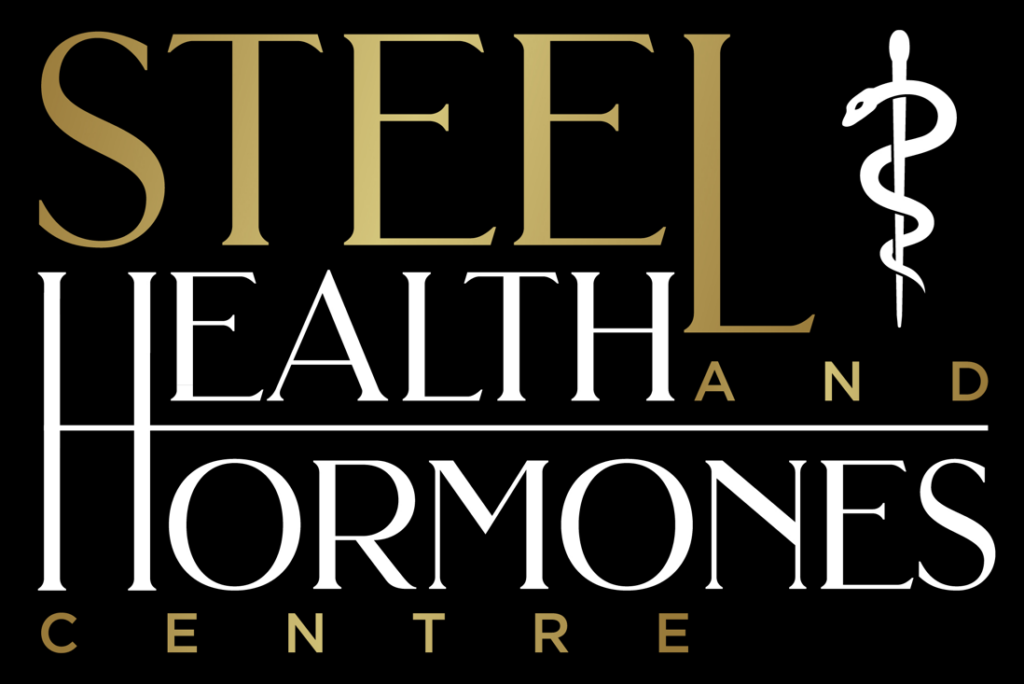Estradiol is an important hormone in the male body. It plays a crucial role in bone health, brain function, sexual performance, and more. But like many things in the body, too much of a good thing can lead to problems. Elevated estrogen levels in men can result in symptoms like gynecomastia (growth of breast tissue), mood swings, and sexual side effects. Managing estradiol is a key part of effective TRT — and that’s exactly what we’ll be discussing today.
If you’re interested in the specific medications used to control estradiol, check out the video above. This post will give you a general overview of how estrogen is produced and how we can manage estrogen conversion.
Quick Disclaimer
I’m the owner of Steel Health and Hormones Centre, with offices in Wexford and Delmont, Pennsylvania — but I’m not a doctor. This content is for educational and entertainment purposes only and is not intended as medical advice. If you’d like to work with a qualified medical professional, fill out the contact form below and we’ll be in touch within 24 hours.
How Estradiol Is Made
Humans don’t make estrogens directly — they’re derived from androgens through a process called aromatization. There are several androgens (like testosterone and androstenedione) and estrogens (like estradiol and estrone), but in the context of TRT, estradiol is the estrogen we care about most.
Estradiol is created when testosterone aromatizes.
As mentioned earlier, estradiol is essential — but when levels climb too high, they can cause serious side effects. So how much is too much? That’s debatable, but let’s go over some common signs.
Symptoms of High Estradiol
1. Nipple Sensitivity: This could feel like burning, itching, or soreness. In some cases, a lump may form under the nipple — a classic sign of gynecomastia, often linked to elevated estradiol on TRT.
2. Mood Swings or Low Mood: Some men become overly emotional in situations that don’t warrant it. Others experience persistent low mood or a mild, nagging depression.
3. Sexual Dysfunction: High estradiol can cause:
- Reduced libido
- Weaker erections
- Loss of erection during intercourse
- Difficulty reaching orgasm
These symptoms can be caused by high estradiol, though it’s important to confirm with labs.
Bloodwork & Ideal Ratios
Symptoms alone aren’t enough — always back them up with bloodwork.
Most men feel their best when estradiol levels are about 1/20 to 1/25 of their total testosterone level. If your labs confirm elevated estradiol and you’re experiencing the symptoms above, there are several ways to bring things back into balance.
How to Manage Estradiol on TRT
Start with Testosterone Itself
Since estradiol is made from testosterone, the first step is reviewing your testosterone dose and injection protocol.
Best practices:
- Inject 2–3 times per week
- Use a short needle (subQ or IM)
- Monitor labs regularly
If your testosterone levels are steady and your estradiol is still high, you may consider an aromatase inhibitor.
Aromatase Inhibitors: Anastrozole
Anastrozole is a commonly used aromatase inhibitor. It works by binding to the aromatase enzyme, preventing it from converting testosterone into estradiol. It’s generally well tolerated by most men.
However, it’s critical to monitor levels carefully — too little estradiol can lead to:
- Joint pain
- Fatigue
- Low libido
- Poor mood
Other Medications
Other AIs like exemestane and letrozole are sometimes used, but rarely in a TRT context due to their stronger suppression and increased side effect profiles. These are discussed in more detail in the video above.
Ready to Get Started?
If you’re interested in testosterone replacement therapy, hormone optimization, or diagnostic bloodwork, fill out the contact form below. We’ll get back to you within 24 hours.


